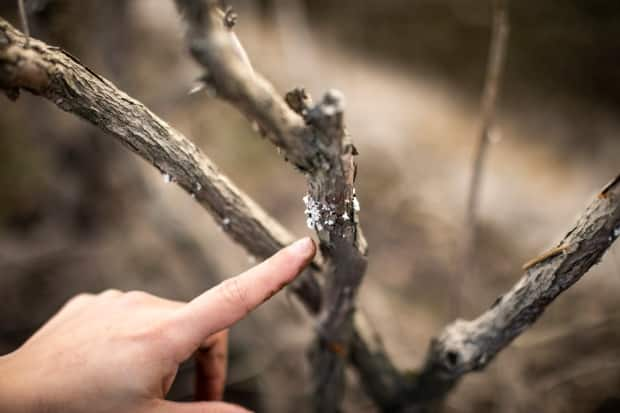Fraser Valley farmers won't know for weeks how floodwaters have affected prized soil
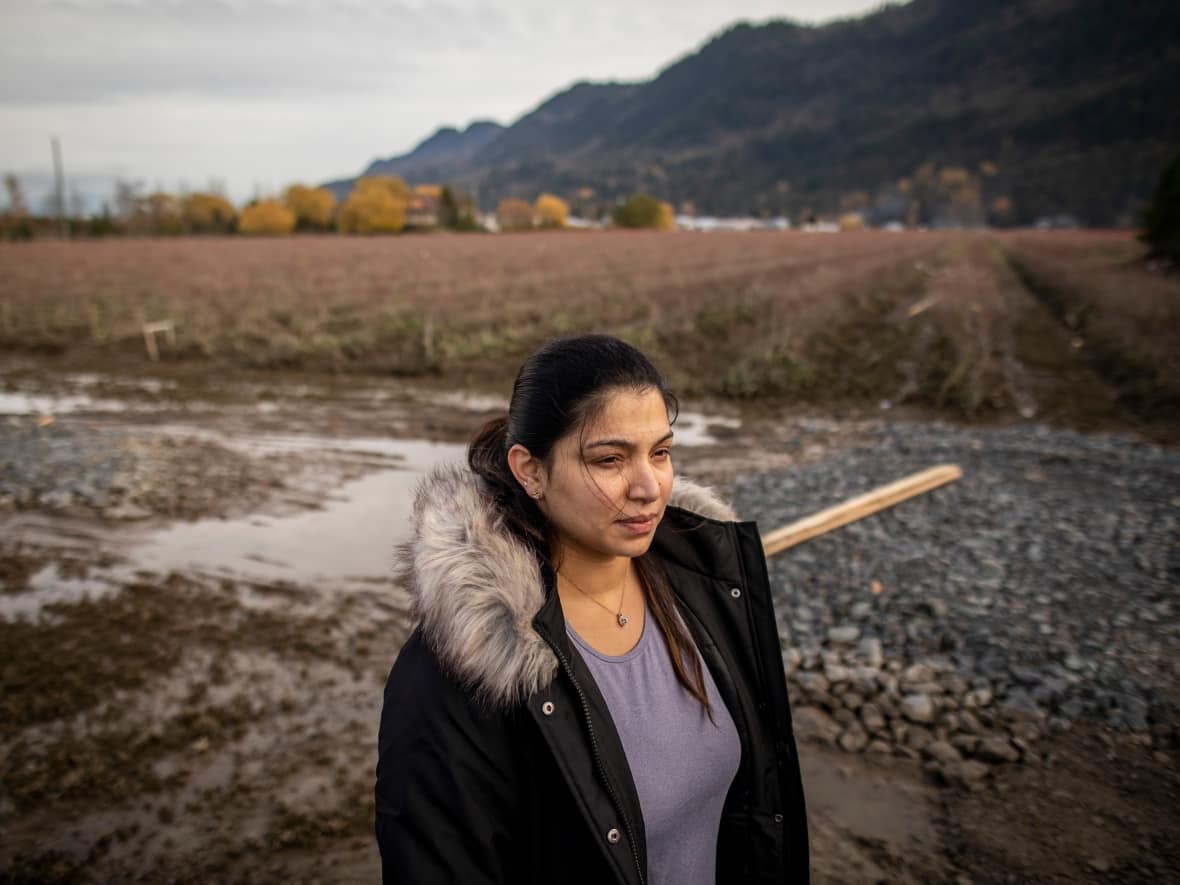
Six days into the flood, Harman Kaur and her husband took a drive past their acreage and found thousands of their ruby-red blueberry bushes were still completely buried in the murky, brown floodwater.
Leaking pesticides swirled around the field. Garbage and gas tanks floated past. The smell of fuel filled their noses.
"There was a complete layer of oil on top [of the water], and we're talking what I could just see from the road," said Kaur, 29, whose family has owned their farm in the Arnold area of Abbotsford, B.C., for more than a decade.
"We don't even know what's gotten into the plants and the soil.... God knows."
Kaur and her husband are among the farmers worried for the health of the valuable soil in the Sumas Prairie, now that hundreds of acres have been sitting in muddy floodwater for more than a week.
Images of oil, garbage and jerry cans drifting through the water create the impression of an agricultural nightmare, but experts say it will be weeks until assessments can confirm exactly how the water has affected some of the most prized farmland in the province.
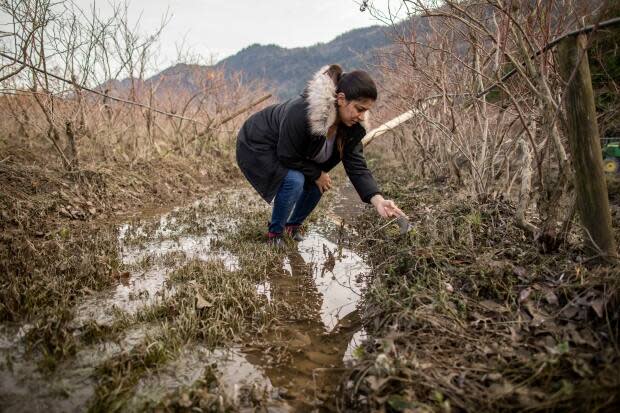
Prized fields 'like a war zone,' responder says
Much of B.C.'s food production happens in the Sumas Prairie, a low-lying part of the Fraser Valley about 90 kilometres east of Vancouver. The area is irresistible to some of the largest agriculture operations in the province for a combination of reasons: the fields are flat, there's a temperate climate year-round and it's close to the big city.
But the soil stands out, too.
The prairie was a shallow lake until it was drained in the 1920s, which makes the soil — sandy at the lake's edge and clay-like toward its centre — especially nutrient-rich and suitable for dozens of varieties of vegetables, berries and livestock.
The city has warned the water now on top of those fields is not safe.
"It's full of gas, diesel, fertilizer, manure ... it smells like gas," said Kevin Estrada, director of the Fraser Valley Angling Guides Association, whose team has been taking waders and jetboats through the floodplain to help with disaster response.
"It looks like a war zone out there."
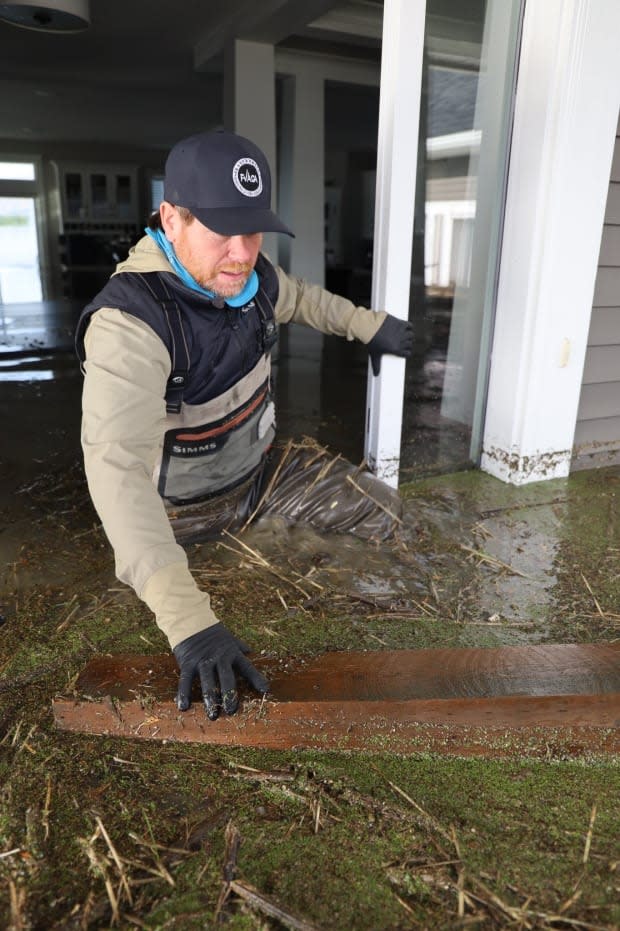
Flooding will upset life within the soil
Experts won't speculate on how contaminated the soil might be until testing can be done, but they know extreme flooding — toxic or not — will disrupt the ecosystem within the soil.
"There are lots of different things going on … it's going to be a long road," said Rose Morrison, professor emerita at the University of the Fraser Valley who's studied soil science and lived in Chilliwack, B.C., for more than 40 years.
The weight of the water alone will squeeze any available oxygen out of the soil, Morrison explained. The lack of air will starve plants' roots and kill scores of beneficial bacteria, fungi and earthworms living beneath the surface.
The floodwater can erode and wash away critical topsoil — the most important, organic part of the soil — and spread it elsewhere, like into the nearby Fraser River.
"Those pollutants may not be on site anymore. They actually might be in our nearby aquatic ecosystems," said Sean Smukler, an associate professor and agricultural ecologist at the University of British Columbia.
Some fields will fare better than others, Morrison added. Some soils will drain better, some plants will be better at neutralizing chemicals and some areas will have better water flow to dilute pollutants.
Morrison has every faith the farmers have the skill, knowledge and technology to restore the fields when the time comes.
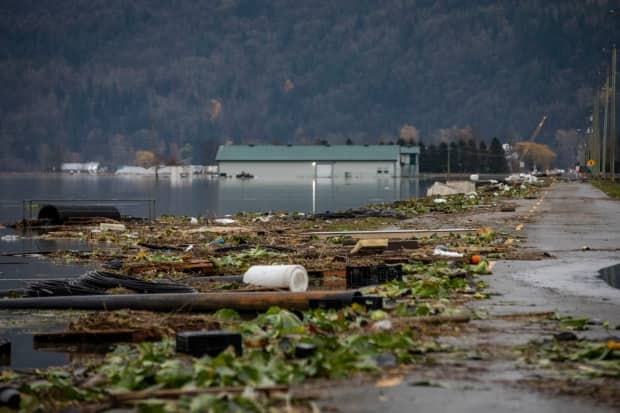
"The farmers on the Sumas Flats are extremely good farmers ... we know when it comes for them to rebuild after this devastating effect, we will be in good hands," she said.
"The soil is the farmer's livelihood, they're not going to take chances with it."
Province putting together team for testing
The province has assembled a team of soil scientists to assess the viability of the soil in wake of the floods, but that work can't begin until the water recedes. The ministry said the work will likely take weeks.
"It's an incredibly sad mess that we have," Agriculture Minister Lana Popham said in an interview with CBC on Wednesday.
"There is contaminated water resting on good growing lands and those lands are going to have to be remediated."
The cost of soil sampling, testing and analysis could get into the thousands of dollars for a few acres depending on what kind of chemicals are being tested for, Smukler said.
WATCH | B.C. Agriculture minister on help coming for devastated farmers:
After the water finally receded from Kaur's property, she and her husband returned Tuesday to find the red blueberry bushes were left coated in a layer of grey muck. The buds of the plants, where fruit is supposed to appear, were caked with silt and dirt. The top soil was gone and, in some places, the exposed roots were covered in a sticky, blue-green material they couldn't even identify.
Answers will come soon enough.
"Honestly, I'm afraid my bushes are just going to fall down," Kaur said.
